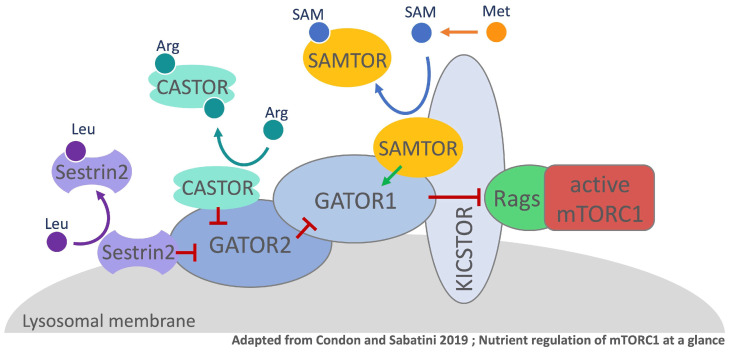Figure 4.
Amino acid perception in mammalian cells via mTORC1. For simplicity, only the components that are mentioned in this paragraph are shown in the model. mTORC1 (mechanistic Target of Rapamycin Complex 1), Rags (Rag GTPases), KICSTOR (KPTN-, ITFG2-, C12orf66-, and SZT2-containing regulator of TOR), GATOR1 (GAP activity towards the Rags 1), GATOR2 (GAP activity towards the Rags 2), CASTOR (Cellular Arginine sensor for mTORC1), SAMTOR (S-adenosylmethionine sensor upstream of mTORC1). mTORC1 activity coordinates availability of nutrients with cell growth. Certain amino acids are sensed in the cell and their abundance regulates mTORC1 activity. Leucine binds to its sensor Sestrin2, which leads to Sestrin2 dissociation from GATOR2. Leucine-starvation benefits the interaction of Sestrin2 and GATOR2 promoting the inhibition of mTORC1. CASTOR operates in a similar fashion, however binds 2 molecules of the amino acid arginine. During arginine starvation, CASTOR interacts with and inhibits GATOR2 resulting in subsequent mTORC1 inhibition. Methionine is rapidly converted into SAM and SAMTOR binds the metabolite. In the absence of SAM, SAMTOR interacts with KICSTOR and GATOR1 to inhibit mTORC1 signaling.

